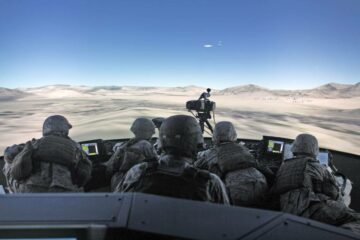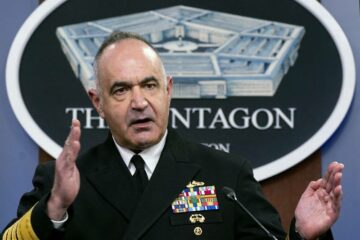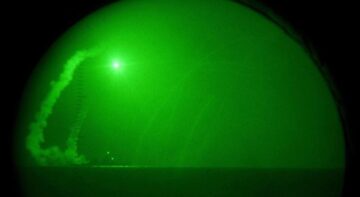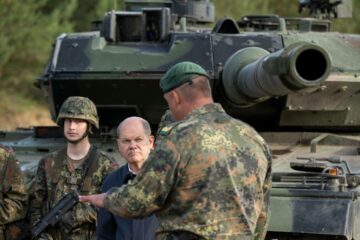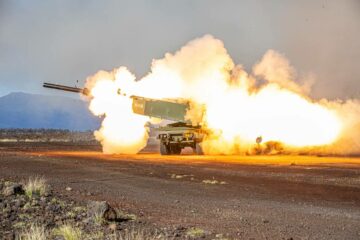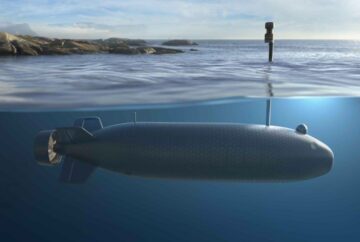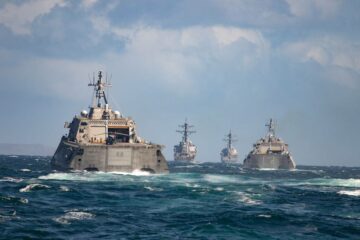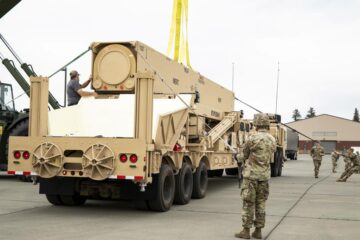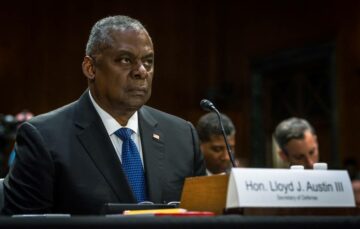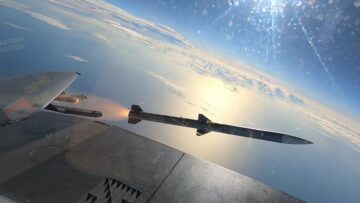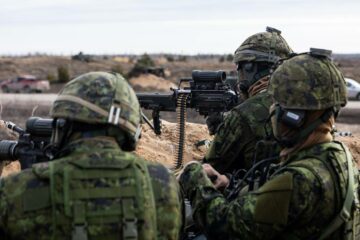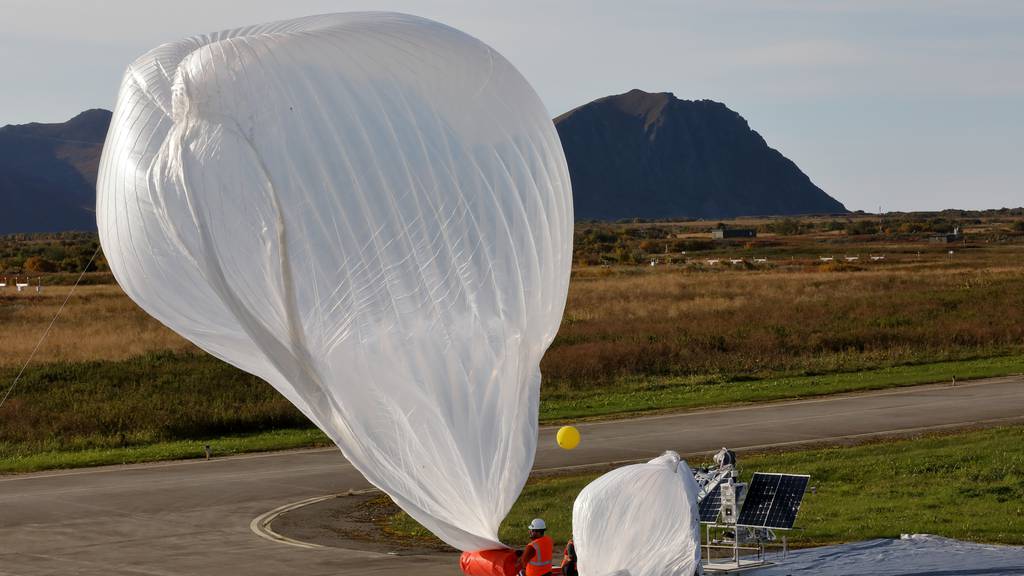
The U.S. Army will stand up a cross-functional team within its modernization branch to develop deep sensing capabilities, according to Chief of Staff Gen. Randy George.
More details will come toward the end of the month when Army Futures Command commander Gen. Jim Rainey unveils the new CFT at the Association of the U.S. Army’s Global Force Symposium in Huntsville, Alabama, the chief said.
George told reporters at the March 7 McAleese & Associates annual defense forum in Washington that the Army is seeing a wide variety of technology that can help the service see farther and better including high-altitude balloons with a variety of payloads.
Deep sensing will help with reconnaissance and surveillance as well as long-range fires targeting.
“It gets back to the sensors and how that’s going to look inside our formations, that’s what we’re working toward,” George said.
Deep sensing platforms could also include things like high-altitude, fixed-wing, solar-powered platforms, other unmanned aircraft or manned spy planes with more capable sensors. The Army is experimenting with all of these capabilities.
The service is currently taking capabilities like high-altitude balloons and figuring out where they might reside with formations and how they might be employed by units at places like the National Training Center at Fort Irwin, California, George noted. For example, the Army is experimenting with high-altitude balloons at the service’s major experimentation capstone event Project Convergence now underway.
Army Futures Command, which was established more than five years ago to tackle the Army’s toughest modernization challenges, set up cross-functional teams to focus on different capabilities the service needs to fight in a multidomain environment against high-end threats and near-peer adversaries.
The original CFTs are Long-Range Precision Fires, Next-Generation Combat Vehicles, Future Vertical Lift, the Network, Precision Navigation and Timing, Air-and-Missile Defense, Soldier Lethality and Synthetic Training Environment. The idea was to convene a whole range of Army officials, from training and doctrine writers to sustainment experts to acquisition officers and even system operators, to ensure the success of a program.
A year ago, Rainey said there would be some changes to CFTs down the road as programs are fielded and that some new CFTs would emerge.
At last year’s Global Force Symposium, Rainey unveiled plans for the Army’s newest CFT, one that would focus on contested logistics and would be based in Huntsville nested near Army Materiel Command, which handles logistics capabilities.
Jen Judson is an award-winning journalist covering land warfare for Defense News. She has also worked for Politico and Inside Defense. She holds a Master of Science degree in journalism from Boston University and a Bachelor of Arts degree from Kenyon College.
- SEO Powered Content & PR Distribution. Get Amplified Today.
- PlatoData.Network Vertical Generative Ai. Empower Yourself. Access Here.
- PlatoAiStream. Web3 Intelligence. Knowledge Amplified. Access Here.
- PlatoESG. Carbon, CleanTech, Energy, Environment, Solar, Waste Management. Access Here.
- PlatoHealth. Biotech and Clinical Trials Intelligence. Access Here.
- Source: https://www.defensenews.com/land/2024/03/07/us-army-to-stand-up-cross-functional-team-for-deep-sensing/
- :has
- :is
- :where
- $UP
- 7
- 70
- 8
- a
- According
- acquisition
- against
- ago
- aircraft
- Alabama
- All
- also
- an
- and
- annual
- ARE
- Army
- Arts
- AS
- associates
- Association
- At
- award-winning
- back
- based
- BE
- Better
- boston
- Boston University
- Branch
- by
- california
- CAN
- capabilities
- capable
- Center
- challenges
- Changes
- chief
- College
- combat
- come
- Convergence
- could
- covering
- cross-functional teams
- Currently
- deep
- Defense
- Degree
- details
- different
- down
- emerge
- employed
- end
- ensure
- Environment
- established
- Ether (ETH)
- Even
- Event
- example
- experimenting
- experts
- fight
- fires
- five
- Focus
- For
- Force
- Fort
- Forum
- from
- future
- Futures
- Gen
- George
- gets
- Global
- going
- Handles
- help
- High-End
- holds
- How
- HTTPS
- idea
- images
- in
- include
- Including
- inside
- ITS
- Jim
- journalism
- journalist
- jpg
- Land
- Last
- like
- logistics
- Look
- major
- March
- master
- might
- modernization
- Month
- more
- National
- Navigation
- Near
- needs
- nested
- network
- New
- Newest
- news
- next-generation
- noted
- now
- of
- officers
- officials
- on
- ONE
- operators
- or
- original
- Other
- our
- out
- Places
- Planes
- plans
- Platforms
- plato
- Plato Data Intelligence
- PlatoData
- Precision
- Program
- Programs
- project
- range
- road
- s
- Said
- Science
- see
- seeing
- sensors
- service
- set
- she
- solar-powered
- some
- Staff
- stand
- success
- surveillance
- Symposium
- synthetic
- system
- tackle
- taking
- targeting
- team
- teams
- Technology
- than
- that
- The
- There.
- These
- they
- things
- threats
- timing
- to
- told
- toward
- Training
- u.s.
- Underway
- units
- university
- unveiled
- Unveils
- us
- us army
- variety
- Vehicles
- vertical
- was
- washington
- WELL
- What
- when
- which
- whole
- wide
- will
- with
- within
- worked
- working
- would
- writers
- year
- years
- zephyrnet

